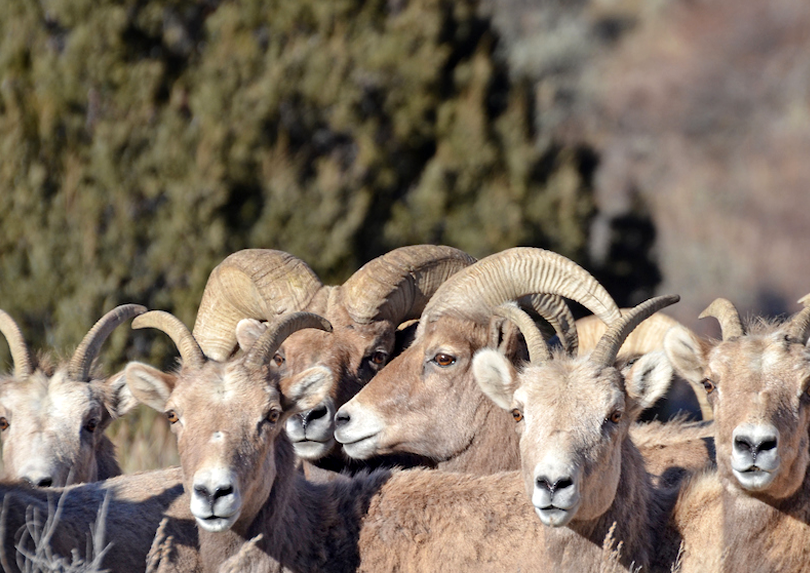Rocky Mountain Bighorn Sheep
Page Content

Overview
Despite its iconic status and current prominence, the bighorn sheep was near extinction at the turn of the century. Diseases introduced through European livestock and unregulated hunting had decimated populations throughout the West, and only a small number of the native sheep remained in Colorado in the early 1900s.
Thanks to the creation of the North American Model of Wildlife Conservation and the work done in Colorado over the past century bighorn sheep along are doing very well. This model takes funding from the sale of hunting and fishing licenses to invest into wildlife management, research and habitat enhancement.
Why Are Bighorn Sheep Important?
Majestic and agile, the Rocky Mountain bighorn sheep is a prominent figure on the steep and jagged walls of Colorado's canyons.
What Are The Associated Challenges?


What Is CPW Doing?
In cooperation with the Rocky Mountain Bighorn Society, we have spent decades rebuilding sheep populations through trapping and relocation efforts.
CPW conducted the first sheep transplants in the 1940s, including planting bighorns between Georgetown and Silver Plume. Known simply as the "Georgetown Herd," this population of 250-350 sheep is one of the largest herds in the state and the area has become one of the most popular sheep viewing sites in the nation.
Since Colorado's restoration efforts began, CPW has completed more than 100 bighorn sheep transplants, most of which took place in the 1970s and 1980s. Gore Canyon in northwest Colorado is one of the most recent transplant locations. CPW closely monitors bighorn sheep herds and maintains healthy populations through controlled hunting and ongoing trapping and relocation. Thanks to decades of dedicated conservation efforts, Colorado's iconic bighorn sheep are once again abundant with an estimated statewide population of 7,000 animals.

